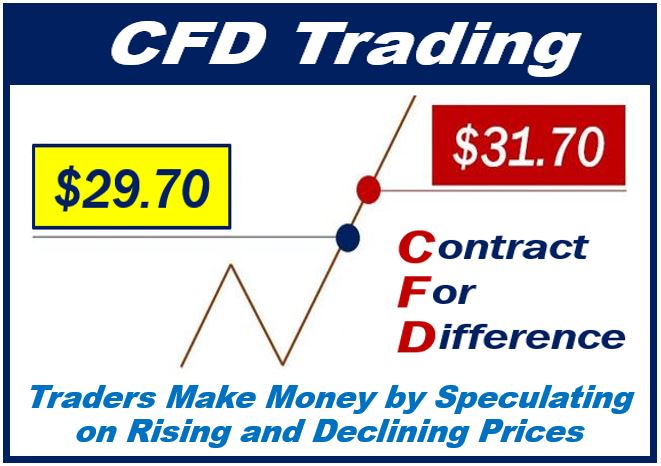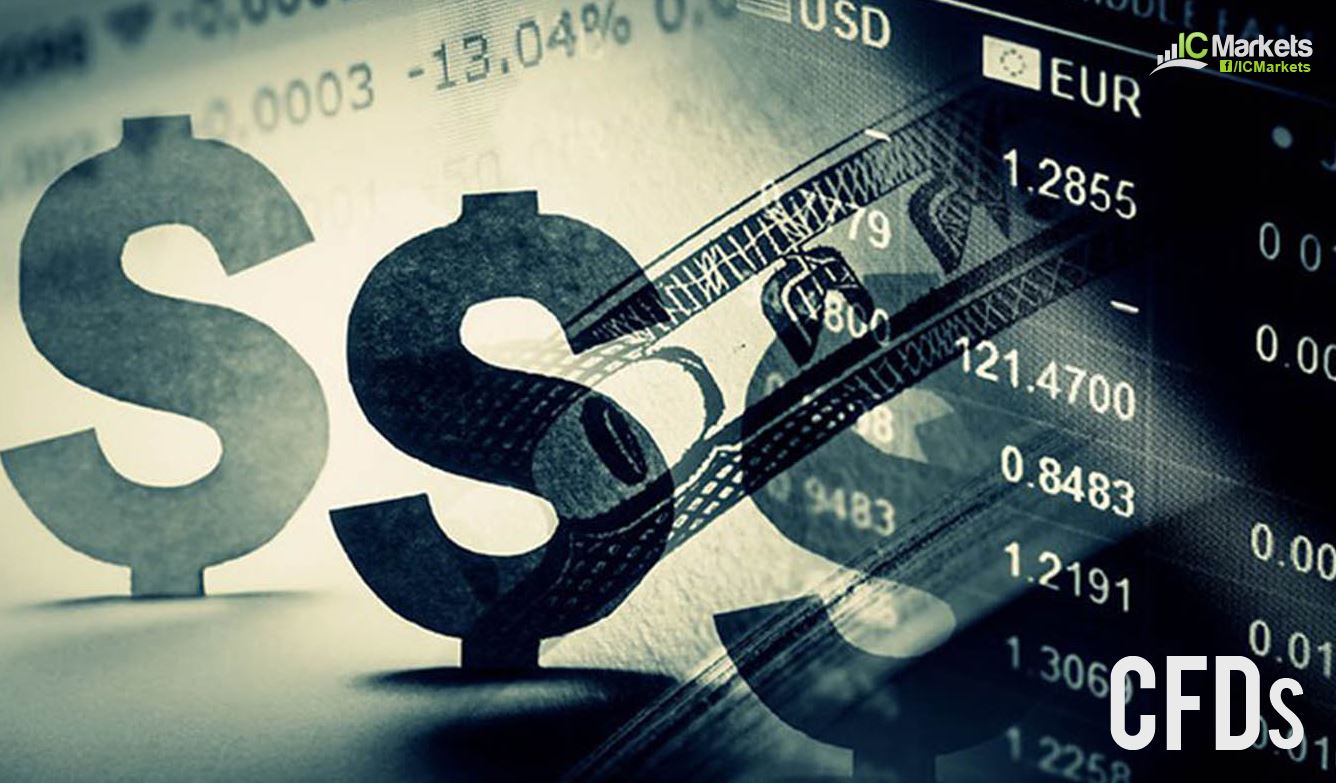CFD TRADING
CFD trading is described as “the purchase and sale of CFDs,” where “CFD” stands for “contract for difference.” CFDs are a type of derivative product that allows you to bet on financial markets like stocks, forex, indices, and commodities without having to own the underlying assets.
Instead, when you sell a CFD, you agree to swap the difference in an asset’s price between when the contract is opened and when it is closed.

FEATURES AND USES
-
Speculation On price movements
One of the most attractive aspects of CFD trading is that you can bet on market fluctuations in any direction, with the amount of profit or loss you make depending on how reliable your prediction is.
-
Short and long CFD trading explained
CFD “trading CFD trading allows you to bet on market changes in any direction. So, in addition to simulating a conventional trade that profits when a market rises in price, you can open a CFD position that profits when the underlying market falls in price.
This is known as selling or” ‘going short,’ as opposed to purchasing or ‘going long.’ Profits and losses on both long and short trades will be realized until the position is closed.
-
Leverage in CFD trading
Since CFD trading is leveraged, you can gain exposure to a large position without having to invest the entire cost up front. Although leverage helps you to distribute your capital more broadly, bear in mind that your benefit or loss will always be focused on the overall size of your position.
Profits and losses can be significantly magnified as compared to the original investment, and losses can also surpass deposits. As a result, it’s important to monitor your leverage ratio and ensure that you’re trading within your means.
-
Margin
Since “the funds needed to open and retain a position – the margin – constitute just a fraction of its overall size, leveraged trading is often referred to” as ‘trading on margin.’
There are two forms of margin when selling CFDs. A deposit margin is needed to open a spot, and a maintenance margin could be required if your trade is on the verge of losing money that the deposit margin – and any additional funds in your account” – can’t cover.
If this occurs, you will receive a margin call from your provider, requesting that you top up your account’s funds. If you don’t add enough money to the account, the place will be closed, and any losses will be realized.
-
Hedging with CFDs
CFDs may also be used to protect an existing portfolio from losses.

CFDs WORKING
What is CFD Trading? A CFD is an agreement between an investor and a CFD broker to exchange the difference in the value of a financial asset (stocks or derivatives) between the contract’s opening and closing dates.
It is a” sophisticated trading technique that can only be used by seasoned traders. CFDs do not require the distribution of physical products or securities. The underlying asset is never actually owned by a CFD investor; instead, the investor earns income based on the asset’s price adjustment. A trader may, for example, bet about whether the price of gold will rise or fall rather than buying or selling actual gold.
In essence, CFDs allow investors to wager on whether “the price of an underlying asset or security will rise or fall. Traders have the option of betting on upward or downward movement. If a trader who has purchased a CFD notices that the asset’s price has increased, they will sell their position.
The discrepancy between the purchase and selling prices is added” together to get the net difference. The investor’s trading account settles the net difference, which represents the profit from the transactions.
If, “on the other hand, the trader expects the asset’s value to fall, he or she will open a” sell position. The trader must buy an offsetting trade in order to close the position. The loss’s net difference is then settled in cash from their account.
COUNTRIES IN WHICH CFDs CAN BE TRADED
The “Australian Securities and Investment Commission (ASIC) has announced some amendments to the issue and distribution of CFDs to retail clients in Australia, where CFD contracts are currently permitted.ASIC’s mission is to improve consumer protections by limiting retail clients’ access to CFD leverage and focusing on CFD product features and sales practices that amplify retail clients’ CFD losses. The product intervention order released by ASIC will take effect on March 29,” 2021.
CFD trading is prohibited in the United States by the Securities and Exchange Commission (SEC), but non-residents may trade them.
CFDs DISADVANTAGES
-
Traders pay the spread
Although “CFDs are an appealing alternative to conventional markets, they are not without risk. For instance, paying “the spread on entries and exits removes the prospect of profiting from small movements. In relation to the underlying security, the spread reduces winning trades by a small amount while increasing losses by a small amount.
Consequently, although conventional markets subject traders to fees, regulations, commissions, and higher” capital” requirements, CFDs reduce income by reducing spread costs.
-
Weak Industry Regulation
The “CFD market isn’t tightly controlled. A CFD broker’s credibility is determined by its reputation, durability, and financial position, not by its government status or liquidity. There are some excellent CFD brokers out there, but it’s important to do your homework before signing” up with one.
-
Risks
CFD trading is a fast-paced market that needs constant attention. As a consequence, when trading CFDs, traders should be mindful of the major risks involved. You must manage liquidity risks and margins; if you are unable to cover value declines, your provider can close your spot, and you will be responsible for the loss regardless of what happens to the underlying asset. A good option is to make use of resources such as titantrade review to manage your risks.
Leverage risks increase your potential gains while also increasing your potential losses. Many CFD providers offer stop-loss limits, but “they can’t guarantee you won’t lose money, particularly if there’s a market closure or a sharp price movement. Execution risks may also” arise as a result of trade lags.
Interesting related article: “What is a Trader?”

